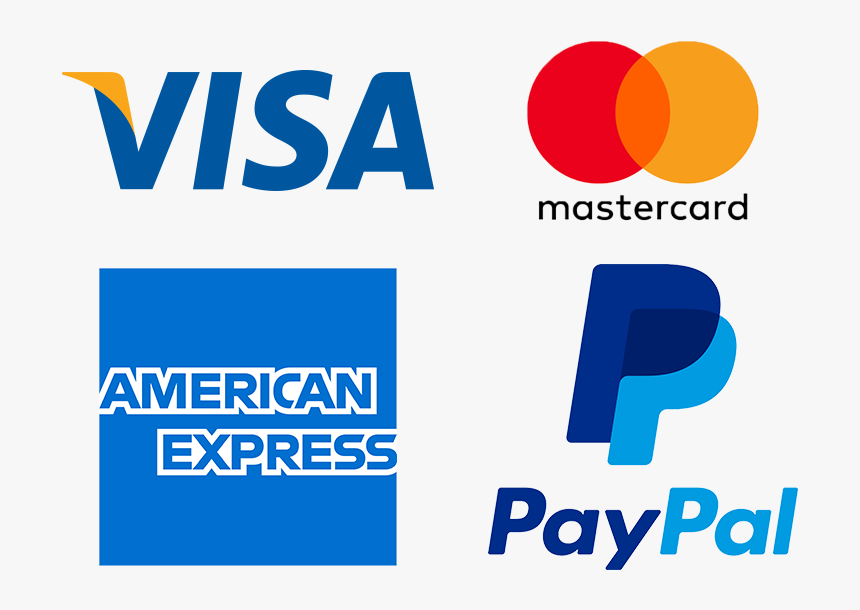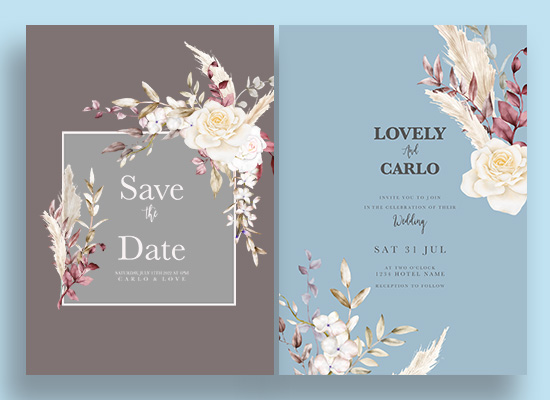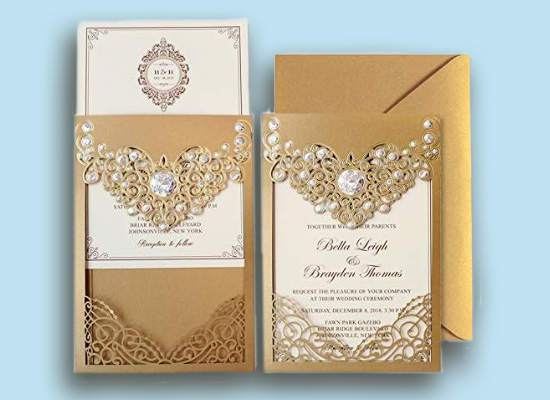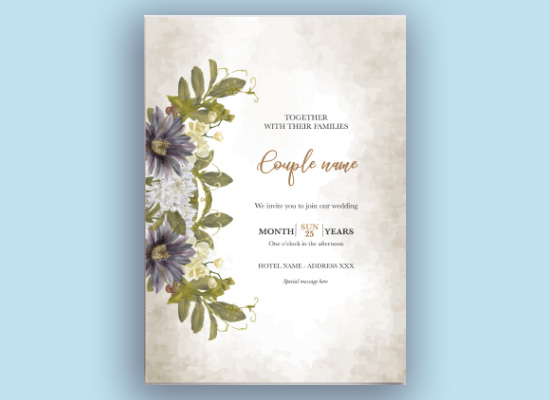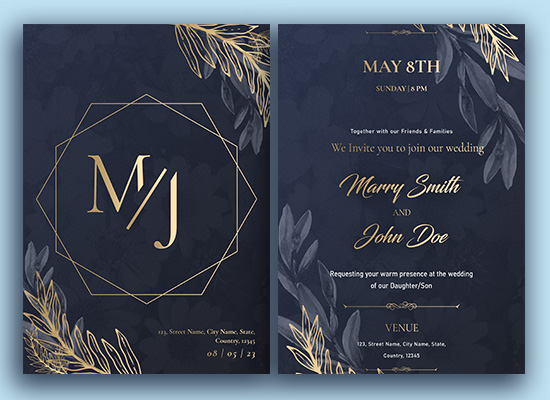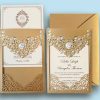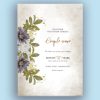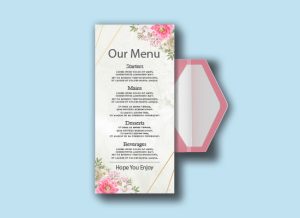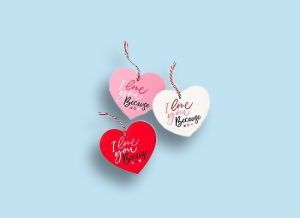Short Description
Wedding Invitation
Please select artwork files:

Related Products
Additional Information
Wedding Invitation
Design the perfect wedding invitation with personalized touches. Elegant and unique, it sets the tone for your special day with style.
Wedding Invitations: The First Impression of Your Special Day
A wedding invitation is more than just a piece of paper; it’s the first glimpse into a couple’s love story and the celebration they are about to share with their loved ones. This important document sets the tone for the wedding and provides essential information about the event. From the design to the wording, every element of a wedding invitation reflects the couple’s style, personality, and the theme of their special day. In this guide, we will explore the significance of wedding invitations, key components to include, popular styles, and tips for creating the perfect invitation.
The Importance of Wedding Invitations
- Setting the Tone:
- Wedding invitations play a crucial role in establishing the overall tone and theme of the wedding. A formal invitation suggests a traditional affair, while a casual design indicates a relaxed celebration. The style and wording help guests understand what to expect on the big day.
- Providing Essential Information:
- Invitations are essential for communicating key details about the wedding, including the date, time, location, and dress code. Clear and concise information ensures that guests know how to plan for the event, from travel arrangements to attire.
- Creating Anticipation:
- A beautifully designed wedding invitation generates excitement and anticipation among guests. It serves as a sneak peek into the couple’s vision for their special day, igniting curiosity about the ceremony and reception.
- Reflecting Personal Style:
- The invitation is an opportunity for couples to express their unique personalities and tastes. From elegant typography to vibrant colors, the design can showcase the couple’s style and set the mood for the celebration.
- A Lasting Keepsake:
- Many guests cherish wedding invitations as mementos from the event. A well-designed invitation can become a cherished keepsake that captures the essence of the couple’s love story.
Key Components of a Wedding Invitation
- Host Line:
- The host line indicates who is inviting the guests to the wedding. Traditionally, this may be the parents of the bride, the couple themselves, or a combination of both. The wording can vary based on family dynamics and personal preferences.
- Couple’s Names:
- The names of the couple getting married are prominently featured on the invitation. Depending on the formality of the event, the names may be listed in full or with titles (e.g., “Mr. and Mrs. John Smith” for a traditional invitation).
- Date and Time:
- The wedding date and time should be clearly stated to avoid any confusion. The wording can be formal or casual, depending on the overall theme of the wedding.
- Venue Information:
- The name and address of the wedding venue are essential components. Including the complete address ensures that guests can easily locate the venue on the day of the event.
- Reception Details:
- If the reception is held at a different location, it’s important to provide details about where and when it will take place. If the reception follows immediately after the ceremony, a simple note can indicate this.
- Dress Code:
- If there’s a specific dress code, it’s courteous to include this information on the invitation. Whether it’s formal, semi-formal, or casual, a dress code helps guests choose appropriate attire.
- RSVP Information:
- Including RSVP details allows guests to confirm their attendance. This can be done through a separate RSVP card or by providing contact information for guests to respond. A deadline for responses is also helpful for planning.
- Additional Information:
- If there are additional details to share, such as accommodation options, transportation arrangements, or wedding websites, consider including this information on a separate enclosure card.
Popular Wedding Invitation Styles
- Traditional Invitations:
- Traditional invitations often feature elegant fonts and classic designs. They typically use formal wording and may include decorative elements like foil stamping or embossing. This style is ideal for formal weddings and often incorporates a formal color palette.
- Modern Invitations:
- Modern invitations embrace contemporary design trends, often featuring clean lines, bold typography, and unique layouts. This style allows for creativity, with unconventional shapes and designs that reflect the couple’s personality.
- Rustic Invitations:
- Rustic invitations often incorporate natural elements and textures, such as kraft paper, burlap, or twine. This style is perfect for outdoor or barn weddings, evoking a warm and charming atmosphere.
- Destination Invitations:
- For couples hosting a destination wedding, invitations can reflect the location. Incorporating elements such as maps, tropical motifs, or seaside colors can create excitement for guests traveling to the wedding.
- Themed Invitations:
- Couples can choose invitations that align with a specific theme, such as vintage, art deco, or bohemian. Themed invitations allow for creative expression, incorporating elements that resonate with the couple’s shared interests.
- Digital Invitations:
- In the digital age, many couples are opting for electronic invitations. Digital invites can be more cost-effective and eco-friendly while still offering beautiful designs. They also allow for easy RSVP tracking and sharing.
Tips for Creating the Perfect Wedding Invitation
- Choose a Cohesive Design:
- Ensure that the invitation design aligns with the overall wedding theme. Consider the colors, fonts, and patterns that will be used throughout the wedding decor to create a cohesive look.
- Proofread:
- Before sending out invitations, double-check all the information for accuracy. Typos or incorrect details can lead to confusion among guests. Consider having someone else review the invitation for a fresh perspective.
- Consider Timing:
- Send out invitations well in advance of the wedding date, typically around 6-8 weeks before the event. For destination weddings, consider sending save-the-date cards 6-12 months prior to give guests ample time to plan.
- Include RSVP Cards:
- Including RSVP cards can simplify the response process for guests. Make sure to provide a return envelope with the RSVP card for convenience.
- Personal Touches:
- Adding personal touches, such as a custom monogram or a favorite quote, can make the invitation more meaningful. Consider using a wax seal, ribbon, or decorative envelope liner for an extra touch of elegance.
- Budget Considerations:
- Set a budget for your invitations and stick to it. Costs can add up quickly, especially with additional elements like embellishments or postage. Research various printing options to find a solution that fits your budget.
- Mailing Options:
- Consider how you will mail the invitations. If you’re using heavier or larger invitations, check with your postal service for the correct postage. Beautifully addressed envelopes can also add a finishing touch to the overall presentation.
Conclusion
A wedding invitation serves as the gateway to a couple’s celebration, setting the tone for the event and providing essential details for guests. By thoughtfully designing an invitation that reflects personal style and the wedding theme, couples can create excitement and anticipation among their guests. From traditional to modern designs, the possibilities are endless. By following best practices for wording, design, and planning, couples can ensure their invitations leave a lasting impression as they embark on their journey of love and commitment.
Get Your Quote
My Account
About Us
Our Products
Contact
Follow Us On
We Accept
